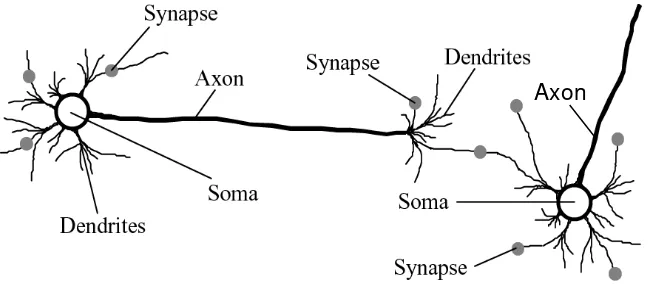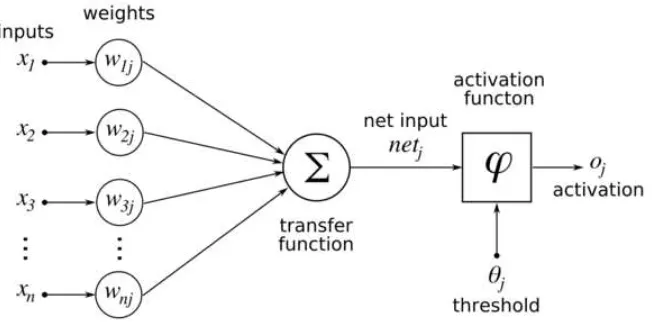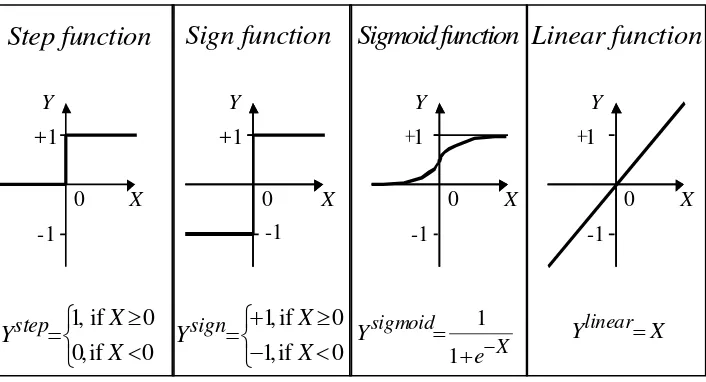UNIVERSITI TEKNIKAL MALAYSIA MELAKA
MODELING COMPLEX AND DYNAMIC
REAL LIFE SCENARIO
This report submitted in accordance with requirement of the Universiti Teknikal Malaysia Melaka (UTeM) for the Bachelor Degree of Manufacturing Engineering
(Robotics and Automation) (Hons.)
by
FOO MING YEE B050910052 901115-10-5194
UNIVERSITI TEKNIKAL MALAYSIA MELAKA
BORANG PENGESAHAN STATUS LAPORAN PROJEK SARJANA MUDA
TAJUK: MODELING COMPLEX AND DYNAMIC REAL LIFE SCENARIO
SESI PENGAJIAN:
Saya FOO MNG YEE
mengaku membenarkan Laporan PSM ini disimpan di Perpustakaan Universiti Teknikal Malaysia Melaka (UTeM) dengan syarat-syarat kegunaan seperti berikut:
1. Laporan PSM adalah hak milik Universiti Teknikal Malaysia Melaka dan penulis. 2. Perpustakaan Universiti Teknikal Malaysia Melaka dibenarkan membuat salinan
untuk tujuan pengajian sahaja dengan izin penulis.
3. Perpustakaan dibenarkan membuat salinan laporan PSM ini sebagai bahan pertukaran antara institusi pengajian tinggi.
4. **Sila tandakan (√)
SULIT
TERHAD
TIDAK TERHAD
(Mengandungi maklumat yang berdarjah keselamatan atau kepentingan Malaysiasebagaimana yang termaktub dalam AKTA RAHSIA RASMI 1972)
(Mengandungi maklumat TERHAD yang telah ditentukan oleh organisasi/badan di mana penyelidikan dijalankan)
Alamat Tetap:
DECLARATION
I hereby, declared this report entitled “Modeling Complex and Dynamic Real Life Scenario” is the results of my own research except as cited in references.
Signature : ……….
Author’s Name : FOO MING YEE
APPROVAL
This report is submitted to the Faculty of Manufacturing Engineering of UTeM as a partial fulfillment of the requirements for the degree of Bachelor of Manufacturing Engineering (Robotics and Automation) (Hons.). The member of the supervisory is as follow:
ii
ABSTRAK
Model pengiraan lembut semakin menggantikan model matematik konvensional. Dalam penyelidikan ini, pengiraan lembut menemukan hubungan menyebeb yang ada dalam satu sistem tertutup. Kekuatan hubungan antara factor A dan factor B boleh diterjemah dalam bentuk berat dalam jaringan neural buatan. Model pengiraan lembut menjadi perhatian kerana terdapatnya kesulitan untuk meyelesaikan masalah yang kompleks dan dinamik. Kesulitan untuk menyelesaikan masalah ini adalah pengiraan yang sukar dan memakan masa. Selain itu, ianya juga susah untuk mendapatkan nasihat pakar yang tidak berat sebelah. Dengan melakukan pengiraan matematik, ianya adalah lebih baik
iii
ABSTRACT
iii
DEDICATION
iv
ACKNOWLEDGEMENT
v
TABLE OF CONTENT
Abstrak i
Abstract ii
Dedication iii
Acknowledgement iv
Table of Content v
List of Tables ix
List of Figures x
List Abbreviations, Symbols and Nomenclatures xii
CHAPTER 1: INTRODUCTION 1
1.1 Background 1
1.2 Problem Statement 2
1.3 Objectives 3
1.4 Scope 3
1.5 Research Design 4
1.6 Significance of Study 4
vi
1.7 Summary 5
CHAPTER 2: LITERATURE REVIEW 6
2.1 Artificial Neural Network 6
2.2 Fuzzy Cognitive Map 9
2.3 Learning Rule 11
2.3.1 The Perceptron 12
2.3.2 The Simulated Annealing Algorithm 14
2.3.3 The Genetic Algorithm 15
2.4 Four Bar Linkage System 17
2.5 MATLAB 19
CHAPTER 3: METHODOLOGY 21
3.1 Case Study Selection 21
3.2 The Model of Four Bar Linkage System 22
3.3 Data Collection 23
3.4 Learning Rule Selection 23
3.5 Root Mean Square Error 25
3.6 Matlab Programming Functions 26
3.6.1 Random Function 26
vii
3.6.3 Sum Function 27
3.6.4 Surface Plotting 28
3.6.5 Computation Time 28
3.7 Analysis Approach 29
3.8 Project Flow Chart 29
CHAPTER 4: RESULTS AND DISCUSSION 32
4.1 Data Collection 32
4.2 The MATLAB Program 34
4.3 Analysis of Inputting Three Different Groups of Data into FCM 37
i Group 1 data set 37
ii Group 2 data set 39
iii Group 3 data set 41
4.4 Analysis of Inputting Different Number Sets of Data into FCM 45
i 10 sets of data used in FCM 45
ii 20 sets of data used in FCM 47
iii 30 sets of data used in FCM 50
4.5Analysis of Different Number of Iterations Performed in FCM 56
i 1000 iterations in FCM learning 56
ii 2000 iterations in FCM learning 58
iii 3000 iterations in FCM learning 60
viii
4.7 Overall Results 64
CHAPTER 5: RECOMMENDATION AND CONCLUSION 66
REFERENCES 67
APPENDICES
ix
LIST OF TABLES
4.1 Data collection 33
x
LIST OF FIGURES
2.1 The structure of a biological neuron 6
2.2 The Artificial Neuron Structure 9
2.3 The Types of Activation Function 10
2.4 The Causal Map 10
2.5 The relationships exist between the nodes 11
2.6 The Flow Chart of Genetic Algorithm 16
2.7 The illustration of a four bar linkage system 17
2.8 The configuration of four bar mechanism. 18
3.1 The model of the four bar linkage system 22
3.2 The protractor ruler 23
3.3 Example of surface plot 28
3.4The project flow chart 29
xi
xii
List Abbreviations, Symbols and Nomenclatures
ANN - Artificial Neural Network FCM - Fuzzy Cognitive Map
GA - Genetic Algorithm
1
CHAPTER 1
INTRODUCTION
A causal system has nodes that affecting each other with a certain degree of weights. Mathematical modeling of causal system is always complex and bulky. Therefore, soft computation using neural and fuzzy application is replacing mathematical models to discover
causal relationships which exist among parameters within a system. The weights representing
the strength of the relationship between the nodes or parameters could be expressed in the gray
scales of their actual values rather than binary values in neural networks. Hence, the weights
could be tuned by using artificial intelligence systems such as fuzzy cognitive map (FCM) to
realistically mimic causal relationships among the nodes representing all system variables.
1.1 Background
2 answer patterns with a certain tolerance of uncertainty and imprecision rather than the specific answers.
Causal problem is defined as the current events that resulted from the consequences from the previous events. The traditional way of solving causal problems are always involving complex and bulky computations in order to find solutions. Although hard computation provide a more accurate answer for some causal problems, the time factor and inability to deal with noisy and uncertain data has always contributed to inefficiency of those systems. Hard computation also requires the huge collection of data and the advice of the experts in related field. Sometimes, it is difficult to get the expert in the field to solve the problems. There is a lack of intelligent system that could model the causal system. This justifies the utilization of soft computing models such as Fuzzy Cognitive Map (FCM). This project is aimed to model such system with real data from the real life scenario. In this study, the intelligent system is hoped to be able to solve the problems in causal system with much lesser computation time consumption and to give an ideal solution.
1.2 Problem Statement
3 1.3 Objectives
These are the objectives to be achieved during this project:
1. To develop a soft computing algorithm for modeling causal system 2. To validate the system on real-life example cases
1.4 Scope
Soft computing techniques the focus goes to FCM due to it is generated automatically based on models of artificial intelligence, a type of machine learning, without expert interference. So it is expert-independent. Besides, it could accept almost any algorithm to be applied into it and tune itself to optimization. FCM needs only some expert’s define in the beginning of the learning such as determining which algorithm to be used and input data. The learning process, however, is totally automatic. FCM used to apply in the four bar linkage system is expected to reduce the computation time in just minutes.
4 limit cycles and chaotic situation. As example cases, a four bar linkage system will be used to validate the model generated.
1.5 Research Design
Throughout the research, the first thing to do is to define the problem, and then the number of concepts could be determined. After studying the related materials or the past knowledge to solve the problem, suitable algorithms could be tried out to formulate the soft computing training rule. The output values could be set into desired tolerance and iteration cycles. MATLAB will be used for the computation process. If the result is satisfied, the evaluation of the result will be carried out. If the result is not satisfied, another algorithm is needed to be try out.
1.6 Significance of Study
5 problem solving tasks to increase their productivity in terms of time and cost management.
1.7 Organization
This report consists of five chapters where the first chapter is the introduction of the project, followed by the chapter of literature review. Next, the methodology chapter will discuss about the methods that have been used in this project. There is data generated for each method, thus the chapter of results and discussion contains the analysis of the data. The report ends with the last chapter, which is the conclusion and recommendation.
1.8 Summary
6
CHAPTER 2
LITERATURE REVIEW
2.1 Artificial Neural Network
Artificial neural network (ANN) simulates the brain cell (neuron) functions. A brain cell consists of synapses and axon to transmit signals. When synapses detect signals that are strong enough, the neuron is activated and the signals will pass along the axon. Signals are sent to other synapses to possibly activate another neuron. Figure 2.1 shows the biological analogy of a neuron cell.
Figure 2.1 The structure of a biological neuron.
Soma Soma
Synapse
Synapse
Dendrites
Axon
Synapse Dendrites
7 n=1
n
In ANN, inputs receive signals (x)and will be multiply with the weights (w). The weights are indications of the signal strength. The positive weights will exhibit the signals while the negative weights will inhibit the signals. The summation of all the weighted inputs (∑ xw)gives a value to compare with the threshold value (ɵ). If the sum is more than the threshold value, meaning that the signals are strong enough, the neuron will then undergo an activation function to produce output signals. Figure 2.2 below shows the single layered artificial neuron structure.
Figure 2.2 The artificial neuron structure.
There are different types of basic activation functions; the step function, the sign function, the sigmoid function and linear function. These functions are shown in Figure 2.3 as follows,
8 Figure 2.3 The types of activation function.
ANN has two types of neural network topologies, the feed forward neural network and the recurrent neural network. In feed forward neural network, the signals flow through layer by layer of processing units without feedback. On the other hand, recurrent neural network has feedback connections from a layer to the previous layer and the dynamic behavior is taken into account.


